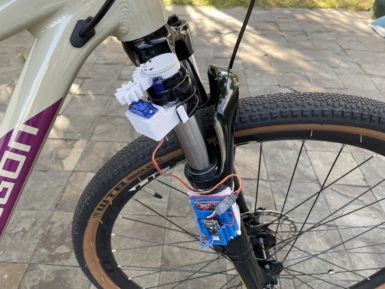
Arduino MKR Connector Carrier (Grove compatible)
Want to connect several Seeed Studio Grove modules to your Arduino board? The Arduino MKR CONNECTOR CARRIER is the perfect companion for Arduino MKR boards and a Grove ecosystem.
Overview
Do you have several components to connect to your project and would rather use connectors instead of soldering? The Arduino MKR CONNECTOR CARRIER provides Seeed Studio's Grove connectors to your MKR board.
The MKR CONNECTOR CARRIER shield is an essential tool for rapidly prototyping activity. It allows you to connect easily and quickly sensors with Grove connectors. This shield can allow you to build applications with different IoT connectivities by simply changing the MKR board and with almost no changes to the code.
Notice: In some Boards, there is an issue with the bottom silk being mirrored
Tech specs
| Interface | 14 Grove Connectors | |
| Analog Inputs | 5 V | |
| A0,A1,A2,A3,A4 single grove Analog input (detailed info) | ||
| A5, A6 double grove Analog input (detailed info) | ||
| Digital Input/Output | 5 V | |
| D0,D1,D2,D3,D4 single grove I/O (detailed info) | ||
| D5,D6 double grove I/O (detailed info) | ||
| Other Connectors | One 5V I2C, One 5V UART | |
| input Voltage (screw terminal block) | 7V - 16V (Buck Datasheet) | |
| Circuit Operating Voltage | 3.3V | |
| Compatibility | MKR |
Conformities
Resources for Safety and Products
Manufacturer Information
The production information includes the address and related details of the product manufacturer.
Arduino S.r.l.
Via Andrea Appiani, 25
Monza, MB, IT, 20900
https://www.arduino.cc/
Responsible Person in the EU
An EU-based economic operator who ensures the product's compliance with the required regulations.
Arduino S.r.l.
Via Andrea Appiani, 25
Monza, MB, IT, 20900
Phone: +39 0113157477
Email: support@arduino.cc
Documentation
OSH: Schematics
The Arduino MKR Connector Carrier is open-source hardware! You can build your own board using the following files:
EAGLE FILES IN .ZIP SCHEMATICS IN .PDFLearn more
Get Inspired
Arduino based bicycle movement sensor and GPS tracker.

… magnetic reed switch, but building the game himself in Unity. He had to construct and animate models for himself, the bike, and the scenery. After adding an AI and ranking system to the game, he was able to successfully race within the virtual environment on a real bike. Responsive LED system Motivated by the desire for a more advanced lighting system while on her nighttime bike rides, Natasha (TechnoChic) decided to affix strips of NeoPixel LEDs all over her bike that could react to music in real-time. The LEDs are controlled by an Arduino Nano 33 IoT that is, in turn, connected to her boombox via a 3.5mm audio jack for reading the audio signal. Two additional Nano 33 IoT boards were used for the wheels, along with more NeoPixels and batteries for each. GPS tracker Bicycle theft has been rapidly increasing over the last couple of years, which is why being able to recover a stolen bike has become vital. Johan’s bike tracker project contains an Arduino MKR GSM 1400 which reads motion data from an IMU and uses it to determine if the bike has moved when it is not supposed to. Once movement is detected, the board reads GPS data from a MKR GPS Shield and sends it over an LTE data connection in real-time so that the bike can be found. Integrated safety features The majority of mountain bikes lack useful safety features such as integrated lights, turn signals, and speed tracking, which is why Collin Wentzien embarked on his “(not so) electric bike” project. He built a series of features, including automatic brake/turn lights, a headlight, and an electronic horn with the goal of improving safety. Furthermore, his bike also got a bike computer upgrade which contains an Arduino Mega, GPS module, and dual screens for displaying relevant telemetry data. Speedometer display After losing the display unit for her bike computer, Element14 Presents host Katie wanted to replace it with a DIY version that tracked the current speed








